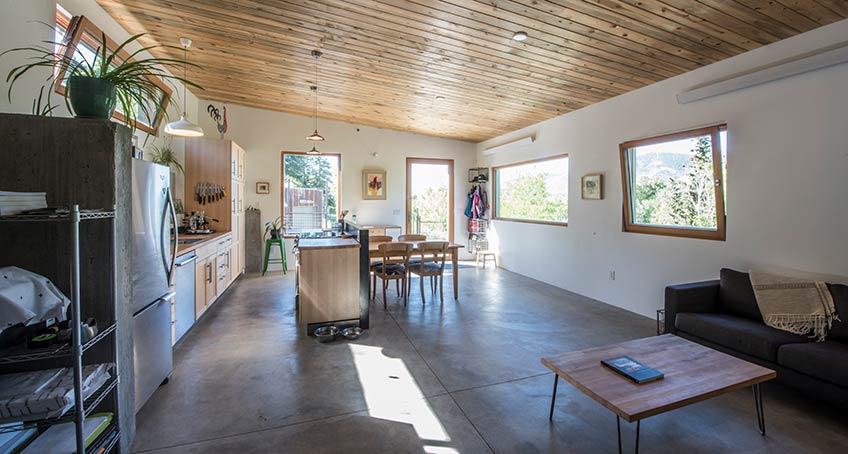Passive Solar Technology Basics
Passive solar technologies convert sunlight into usable heat and cause air movement for ventilation to heat and cool living spaces without active mechanical or electrical devices.

Passive Solar Design
A passive solar building uses south-facing windows to collect heat from the sun and stores that heat in materials throughout the building known as thermal mass.
A successful design must include the following elements:
- Aperture – a large glass area through which sunlight enters the building, should face within 30 degrees of true south and should not be shaded between 9 a.m. and 3 p.m. during the heating season.
- Thermal mass – commonly concrete, brick, stone, and tile. These materials absorb heat from the sunlight during the heating season and also absorb heat from warm interior air during the cooling season.
- Distribution – a method by which solar heat is transferred from where it is collected and stored to different areas of the house by conduction, convection, and radiation.
- Control – devices such as roof overhangs used to shade the aperture area during summer months.
Passive Solar Heating
Passive solar heating systems capture sunlight within the building's materials and then release that heat during periods when the sun is absent, such as at night. South-facing glass and thermal mass to absorb, store, and distribute heat are necessary in the design.
Passive Solar Cooling
Passive solar cooling systems use shading, thermal mass, and natural ventilation to reduce unwanted daytime heat and store cool night air to moderate temperatures.
Additional Resources
Energy Saver: Passive Solar Homes (U.S. Department of Energy)
Energy Saver: Sunrooms and Sunspaces (U.S. Department of Energy)
Energy Saver: Energy Efficient Window Covering (U.S. Department of Energy)
Energy Saver: Energy-Efficient Landscaping (U.S. Department of Energy)
Share
Last Updated Aug. 27, 2025
